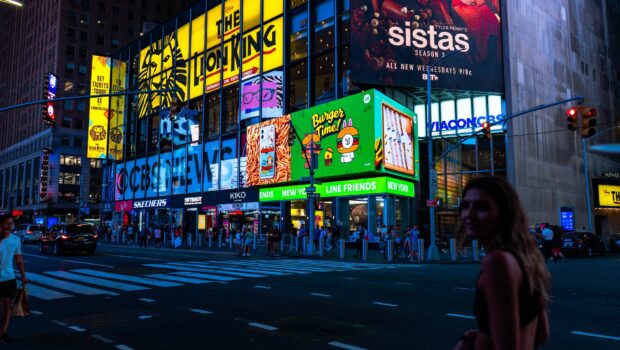How to Choose Outdoor Rental LED Screens
In today’s dynamic world, events and gatherings have taken on a whole new level of visual appeal, with outdoor LED screens becoming a popular choice for organizers looking to engage their audiences effectively. Whether it’s a music concert, a corporate event, a sports match, or a public gathering, the impact of outdoor LED screens cannot be overstated. However, with a plethora of options available in the market, choosing the right outdoor rental LED screen can be a daunting task. In this comprehensive guide, we will explore key considerations to help you make an informed decision and ensure your event leaves a lasting impression.
1. Define Your Event Requirements:
Before diving into the technical aspects of LED screens, it’s crucial to define your event’s specific requirements. Consider the nature of the event, the audience size, and the content you intend to display. A large music festival may require massive high-resolution screens, while a corporate conference might need smaller screens for presentations. Understanding your event’s unique needs will guide your decisions throughout the selection process.
2. Resolution and Pixel Pitch:
Resolution is one of the most critical factors when choosing an outdoor rental LED screen. It directly impacts the clarity and sharpness of the displayed content. The pixel pitch, measured in millimeters, is the distance between the individual pixels. A smaller pixel pitch results in higher resolution and better image quality. For outdoor events, where the audience may be farther away, a pixel pitch between 3mm to 10mm is usually recommended. However, the ideal pixel pitch depends on factors such as viewing distance and the desired visual impact.
3. Brightness and Visibility:
Outdoor settings pose distinct challenges, particularly when it comes to coping with diverse lighting situations. To ensure optimal visibility, opt for LED screens boasting high brightness levels, quantified in nits (cd/m²). The brightness criteria may vary depending on factors such as the time of day, weather conditions, and the screen’s orientation. For daytime events or locations exposed to direct sunlight, it is advisable to select screens with brightness levels surpassing 5,000 nits. Additionally, prioritize screens equipped with adjustable brightness settings to seamlessly adapt to fluctuating conditions.
Dicolor LED screens UT390 offer the flexibility to fine-tune brightness within the range of 800-3000 nits while maintaining consistent grayscale and preserving color uniformity. With a protection level reaching IP65, they effortlessly meet the requisites for both indoor and outdoor applications.
4. Weather Resistance:
Outdoor LED screens must withstand various weather conditions, including rain, wind, and extreme temperatures. Look for screens with an IP65 or higher rating, indicating resistance to dust and water. A robust, weather-resistant design ensures the longevity of the equipment and uninterrupted performance during adverse weather conditions. Additionally, consider features such as anti-glare and UV protection to enhance visibility and protect the screen from environmental factors.
5. Size and Aspect Ratio:
Selecting the right size and aspect ratio for your outdoor LED screen is crucial for creating a visually appealing display. Consider the viewing distance, the layout of the venue, and the content format. For larger events, multiple screens may be necessary to ensure everyone has a clear view. Ensure that the aspect ratio of the LED screen matches the aspect ratio of your content to prevent distortion and optimize visual impact.
6. Ease of Setup and Portability:
Efficient setup and teardown are essential for event organizers, especially for those dealing with tight schedules. Choose outdoor LED screens that are easy to assemble and disassemble. Look for screens with lightweight and modular designs, as this not only simplifies transportation but also allows for flexible configurations. Portable screens with quick-lock systems and minimal wiring can significantly reduce installation time and effort.
7. Power Consumption and Energy Efficiency:
Given the continuous operation of outdoor LED screens during events, power consumption is a crucial consideration. Opt for screens with energy-efficient LED technology that balances performance with power consumption. This not only reduces operational costs but also minimizes the environmental impact of the event. Additionally, screens with built-in power management features, such as automatic brightness adjustment, contribute to energy savings without compromising visibility.
8. Durability and Build Quality:
Investing in high-quality, durable LED screens is essential for the longevity of your equipment. Consider the build materials, structural integrity, and overall construction. Robust screens with sturdy frames and reliable components are more likely to withstand the rigors of outdoor use, transportation, and frequent setups. Prioritize screens from reputable manufacturers with a track record of producing reliable and durable products.
9. Compatibility and Connectivity:
Ensure that the outdoor LED screen you choose is compatible with the source devices you plan to connect, such as cameras, laptops, or media players. Check the available input ports, signal compatibility, and any additional features like wireless connectivity. This ensures seamless integration with your event setup and prevents last-minute compatibility issues.
10. Technical Support and Warranty:
Even with careful planning, technical issues can arise during events. Choose a reputable supplier that offers reliable technical support and a comprehensive warranty. A responsive support team can troubleshoot issues promptly, minimizing downtime and ensuring a smooth event experience. Additionally, a warranty provides financial protection and reflects the manufacturer’s confidence in the product’s quality.
Conclusion:
Choosing the right outdoor rental LED screen is a multifaceted decision that requires careful consideration of various factors. By defining your event requirements, understanding technical specifications, and prioritizing features like weather resistance and durability, you can select a screen that enhances the visual impact of your event. Keep in mind that collaboration with a trusted LED screen rental provider can provide valuable insights and guidance throughout the selection process. Ultimately, a well-chosen outdoor LED screen contributes significantly to the success of your event, captivating the audience and leaving a lasting impression.
Cover Image by Unsplash












